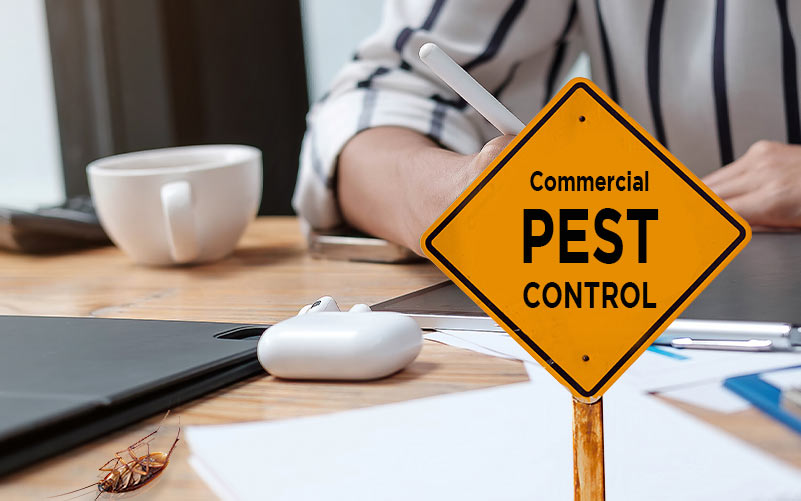A1 Charlotte Pest Control Companies - Your Neighborhood Pest Experts
Bed Pest Therapy Break Down: Contrasting Chemical Vs. Non-Chemical Solutions
In the world of pest control, especially when taking care of the consistent concern of bed insects, the selection between chemical and non-chemical therapy solutions can be an essential one. Both methods provide distinctive benefits and drawbacks, affecting factors such as efficiency, security factors to consider, and general expense. By analyzing the nuanced information of each technique, a clearer understanding of which course to pursue in resolving a bed insect problem can be attained.
Performance of Chemical Therapies
Chemical therapies for bed pest infestations have actually been extensively acknowledged for their fast and potent effectiveness in eradicating these insects. When thinking about the performance of chemical therapies, it is crucial to understand that they can supply a comprehensive and quick solution to a bed pest issue.
Additionally, chemical therapies have the advantage of providing residual impacts, meaning that they can remain to get rid of bed bugs even after the preliminary application. This residual activity is particularly valuable in combating any potential re-infestations. Additionally, the rapid action of chemical therapies can bring alleviation to people facing extreme bed pest infestations, enabling them to restore control of their living rooms swiftly.
Security Interest In Chemical Solutions
One crucial aspect that requires careful factor to consider when utilizing chemical remedies for bed bug treatment is guaranteeing the safety and security of owners and the atmosphere. While chemical therapies can be reliable in getting rid of bed pests, they may present dangers otherwise handled correctly. One of the main safety and security interest in chemical options is the potential harm they can cause to human wellness. Exposure to certain chemicals utilized in bed pest treatments can cause respiratory concerns, skin inflammation, or various other damaging responses, specifically in people with pre-existing problems or sensitivities. Additionally, incorrect application or dose of chemical pesticides can lead to harmful residues remaining in the treated area, posturing long-lasting health dangers to occupants.
Moreover, the ecological impact of chemical solutions is an additional significant factor to consider. Some pesticides used in bed bug treatments might be hazardous to useful insects, wildlife, and environments if they leach right into the soil or water systems. It is important to utilize chemical treatments carefully, complying with safety standards, and considering much less poisonous alternatives to reduce these risks and make sure the effective and secure management of bed insect problems.
Advantages of Non-Chemical Techniques
Thinking about the prospective security worries and ecological effect linked with chemical remedies for bed insect treatment, checking out non-chemical strategies offers an encouraging option with numerous distinct benefits. Non-chemical approaches provide a much safer choice for families, especially those with youngsters, family pets, or individuals sensitive to harsh chemicals. These approaches eliminate the risks of exposure to poisonous materials, decreasing the capacity for damaging health and wellness results. In addition, non-chemical treatments are ecologically pleasant, Discover More as they do not add to air or water air pollution, making them a lasting selection for pest control.
In addition, non-chemical solutions can be efficient in targeting bed bugs, consisting of hard-to-reach areas where chemical treatments might not penetrate - A1 pest control services charlotte. Approaches such as warmth treatment, vacuuming, steam cleaning, and mattress coverings offer complete eradication without the usage of dangerous chemicals.
Limitations of Non-Chemical Treatments

Additionally, non-chemical therapies commonly require multiple applications to accomplish effective elimination. This can be lengthy and might not always guarantee full removal of all bed pests and their eggs, particularly in hard-to-reach or concealed areas.
Moreover, the success of non-chemical treatments greatly relies upon appropriate application and thoroughness, which can be testing for individuals without specialist experience. Insufficient application of non-chemical methods might result in insufficient elimination, resulting in consistent problems and the need for added therapies.
For that reason, while non-chemical therapies have their benefits, it is find out vital to acknowledge these limitations and consider them when establishing one of the most effective technique for taking care of bed pest invasions.
Expense Contrast: Chemical Vs. Non-Chemical Options
Provided the limitations associated with non-chemical treatments, an essential aspect to examine in the context of bed bug monitoring is the expense contrast in between chemical and non-chemical choices. In contrast, non-chemical therapies like heat treatment or steam can be a lot more expensive, with expenses varying from $1,000 to $6,000 for an entire home. While the initial cost of chemical therapies might appear reduced, multiple treatments might be required to completely get rid of the problem, potentially boosting the overall price.
Conclusion

Taking into consideration the potential security concerns and environmental impact connected with chemical remedies for bed pest therapy, exploring non-chemical strategies offers an appealing option with several unique benefits.Offered the restrictions associated with non-chemical treatments, an essential aspect to assess in the context of bed pest monitoring is the price comparison between chemical and non-chemical choices. In contrast, non-chemical therapies like warm treatment or heavy steam can be a lot more costly, with costs varying from $1,000 to $6,000 for an entire home. While the initial expense of chemical treatments may appear lower, numerous treatments may be called for to completely eliminate the invasion, potentially raising the overall cost.In verdict, when comparing chemical and non-chemical bed bug treatment choices, it is necessary to consider efficiency, safety, benefits, restrictions, and price.